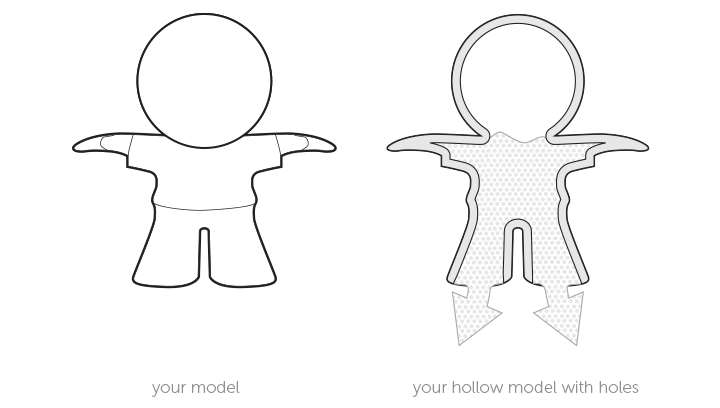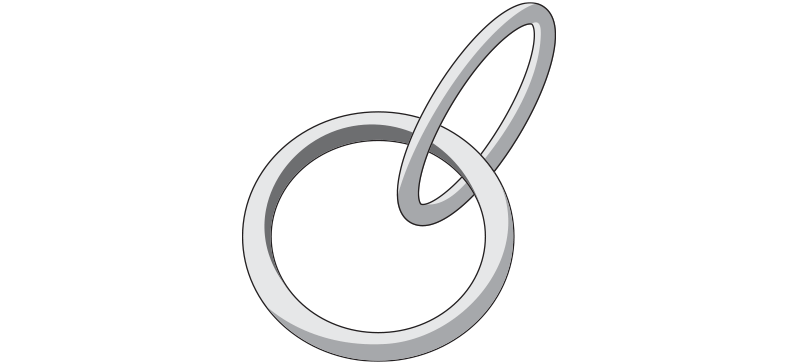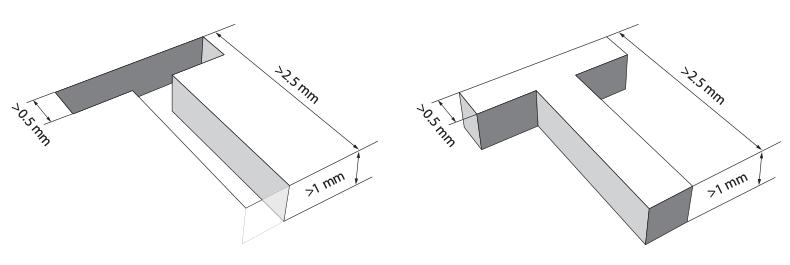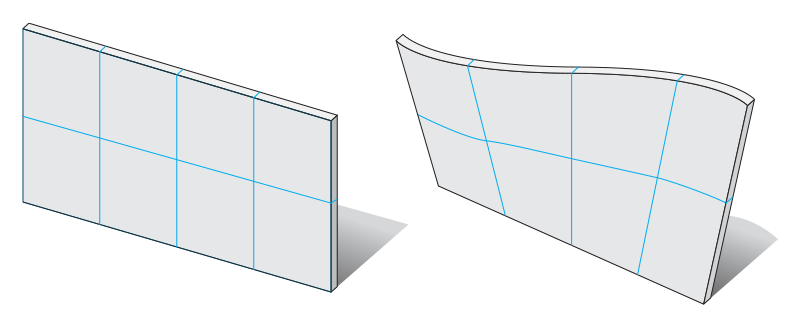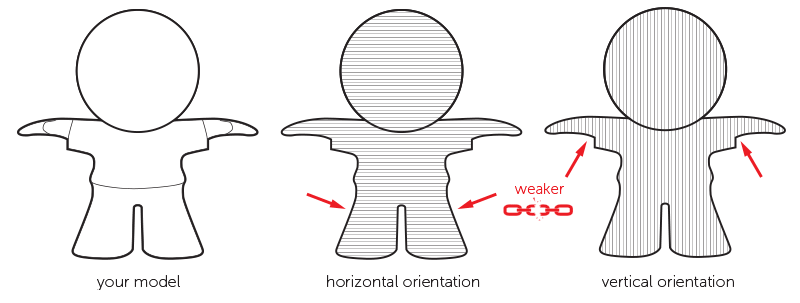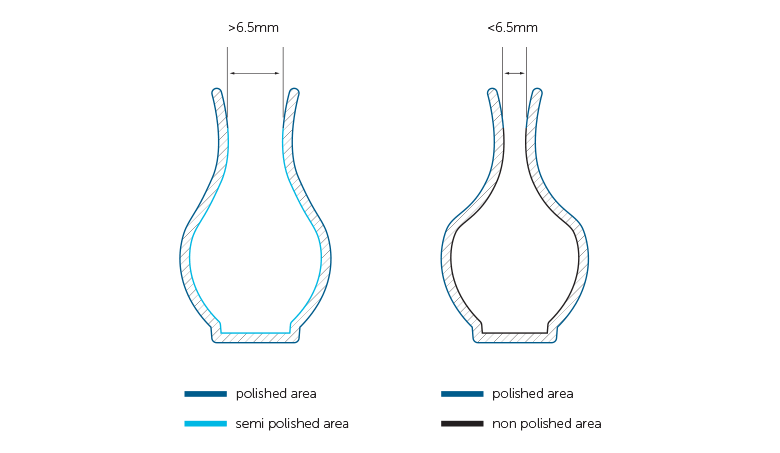Guidelines for Polished Models
Polishing, also referred to as mechanical smoothing, is a special finishing process for Polyamide. To achieve a polished finish, your model is put into a tumbler with small stones that vibrate at a high frequency to smooth the surface of your model.
Only the Strong Survive

Several factors make it hard to fully predict the outcome of the polishing process. One of them is the geometry of your model, which can act differently each time it is put in the tumbling machine. In general, you should have wall thicknesses of at least 1 mm throughout your model. Although we carefully place and orientate your models in our printers to minimize “weak points” created by the layered buildup of your model, certain elements of your design may be more sensitive to the impacts of the polishing stones than others. Therefore, we suggest adding some extra wall thickness if your design can allow for it. Polishing is not advised when your model has tiny details like pins because they will break off during the polishing process.
Polishing on the Inside

As already mentioned, small polishing stones are used to make the surface of your model smoother. However, because of the size of the stones, they can easily get stuck inside small holes. Therefore, we recommend that any openings that need polishing be larger than 6.5 mm in diameter. This helps avoid the problem of the stones getting stuck inside your model. Also, note that the inside of your model will always be less polished than the outside - in fact, your model will not be polished at all on the inside if the holes are smaller than 6.5 mm because the stones won't be able to enter.
Rounded Edges

If your model contains sharp edges, these will be rounded off. Rounded corners and smooth transitions between surfaces will have a higher degree of polishing than sharp edges. Polishing will take 0.1 mm of material off your model, so add extra wall thickness to avoid any problems.
Embossed and Engraved Details

Embossed details on your model tend to be worn away by the polishing stones. Make sure to raise these details by at least 1 mm, otherwise they may disappear when your model is polished. Engraved details are less of a problem because, in most cases, the stones won’t be able to reach the inside of the engraving; however, the edges may still be affected. To be on the safe side, make sure your engravings are deeper than 1 mm.

